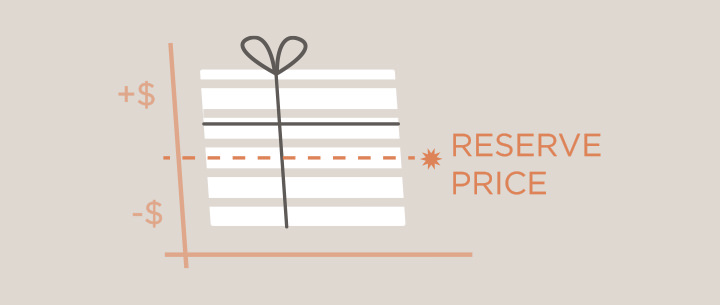
Why Setting a Fair Reserve Price Is Critical for Your Silent Auction’s Success
In order for a silent auction to be successful, it's essential to set a fair reserve price for each item. We touched on this subject in another article about bid increments but today we’ll examine it in more detail.
A reserve price is the minimum amount that an item needs to sell for. It’s a best practice when hosting a silent auction and an important consideration when determining the value of items in your auction.
Without a reserve price, you might see potentially valuable items selling for way less than they’re worth.
But with so many different types of items and values, how do you determine a reasonable reserve price?
Here are a number of things you can do to ensure that your minimum reserve price is fair and effective:
1. Research Thoroughly
The first step in setting a fair reserve price is researching the item. Look for similar items online, in catalogs, or at other auctions to get an idea of what they've sold for in the past. This will help you determine a realistic price for your item.
This rule doesn’t quite apply to every item. If the item is one-of-a-kind or has sentimental value, for example, it will probably be worth more than similar items.
Regardless, research should be a key consideration when setting a fair reserve price and as part of your strategic fundraising plan.
2. Consider the Cost
Next, consider the cost of procuring the item. The reserve price should be at least equal to the cost of acquiring the item, plus any additional expenses such as shipping or handling.
All costs, no matter how small, should be factored into both the reserve price and the best-case scenario selling price of the item to ensure your organization is not losing money.
3. Put Yourself in the Audience’s Shoes
While this might go without saying, it’s worth repeating - it's essential to consider the audience whenever you host a silent auction. If the event is for a specific cause or organization, the reserve price should be set accordingly.
For example, if the event is for a children's charity, items that appeal to families or children should have a lower reserve price than those that appeal to adults.
Another factor to consider is the number of similar items available in the auction. If multiple items are similar in value, you might want to set a fair reserve price for each item to ensure they all sell.
This helps to prevent one item from dominating the bidding and potentially preventing other items from selling.
4. Think About Value
When setting the reserve price, consider the overall value of the auction. If the reserve price is too high, it can discourage bidding and ultimately undercut the entire event’s value.
On the other hand, if the reserve price is too low, the organization may not raise as much money as it could have.
Remember that a silent auction is not the same as a live auction. In a live auction, bidders can see the current bid and bid against each other in real-time.
A Fair Reserve Price Means Silent Auction Success
In a silent auction, bidders are unaware of what others are bidding, so setting a fair reserve price that encourages bidding without discouraging it is key.
